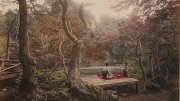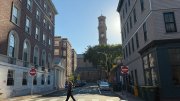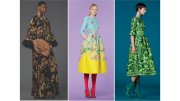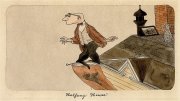Although the Harvard-Yenching Institute is housed on Divinity Avenue, at the eastern boundary of the University’s Cambridge campus, it’s not far from Harvard’s scholarly center. Nestled where a maze of science laboratories meet the Divinity School, flanked by the Semitic Museum and the psychology department, and facing the windows of some of the world’s top Europeanists, it marks a crossroads in the University’s intellectual geography. This seems appropriate. Decades before globalization became a leitmotiv of higher education, the institute (www.harvard-yenching.org) was using scholarship to build a bridge to the other side of the world. Today, it’s one of the leading centers for East Asian studies in the United States—and a destination for many of the Eastern hemisphere’s most promising intellectuals.
The Institute, started in 1928 with the fortune of Charles M. Hall, an aluminum tycoon unaffiliated with Harvard, is the oldest of the University’s foreign-studies centers and perhaps the least understood. Although it houses much of the faculty in the East Asian literatures and civilizations department, it’s legally and fiscally independent of the University. Its library boasts what may be the most important collection of rare East Asian books and manuscripts in the world, but scholars say it’s the institute’s intellectual community that really sets it apart. According to executive director Peter L. Kelley ’74, the institute is “a unique institution within Harvard, not just because of its structural independence.” Every year it brings a significant number of scholars in the humanities from Asia to Cambridge and “represents a real resource—for them, but also for Harvard,” whose own scholars and students it helps send overseas.
The institute tried from the start to develop an intellectual partnership with Yenching (now Peking) University in a way that would benefit both communities. Since then, it has expanded this collaborative model to include close to 50 institutions in seven East Asian countries. Every year these universities nominate top scholars among their graduate students and faculty members for three institute fellowship programs. Those selected as visiting fellows receive funding for a year of predoctoral research at Harvard. The institute’s doctoral scholars program, by contrast, brings promising East Asian students to Cambridge for fulltime enrollment in Harvard’s own Ph.D. program. In many ways, though, the fellowship program centers on the 30 or so humanists whom it invites each year as “visiting scholars.” These relatively young intellectuals—no older than 42—receive a year’s financial and intellectual support as they pursue scholarly projects at Harvard. Because the visiting scholars’ work needn’t pertain to East Asian studies, their expertise has led them throughout the University. (Projects in recent years have ranged from work in anthropology to research on Slavic literature.) The visiting scholars program, which began in 1954, has so far brought to Harvard nearly 1,000 intellectuals, based at institutions from Kyoto University in Japan to Cantho University in Vietnam. Slightly more than a fifth have come from China.
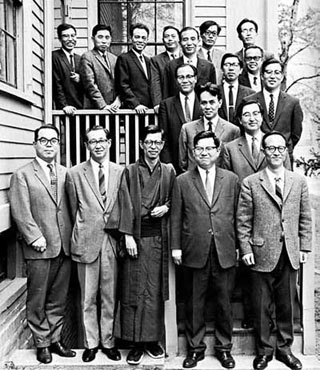 |
| The 1966-1967 visiting scholars pose for the institute's Bulletin |
| Harvard-Yenching Institute |
Kelley considers fellowship programs like these the most reliable and respectful way to disseminate Harvard’s resources eastward. “Institutions will get stronger, but on the basis of the strengths of the individuals,” he says. According to Wei-Ming Tu, the institute’s director and Harvard-Yenching professor of Chinese history and philosophy and of Confucian studies, the same principle holds at home. “Harvard is perhaps one of the most cosmopolitan universities, but it is also extremely parochial,” he says. “We are, in a way, helping Harvard to become internationalized by involving Harvard with some of the most brilliant young minds from East Asia.” Recent invitees, he says, have been able to jump right into timely discussions with some of the University’s most influential thinkers. “It’s no longer a kind of teacher-student relationship at all. It’s basically a friend-to-friend, colleague-to-colleague relationship. And we find ourselves, increasingly, beneficiaries of universities and scholars from East Asia.” Many of the visitors work closely with Harvard’s own humanistsespecially under the auspices of a special program supporting joint research projects.
Such opportunities are part of the academic carte blanche that buoys visiting scholars. They can take classes in any field, participate in seminars, or simply write and research in Harvard’s collections. A few have chosen to teach courses; others take advantage of the English-as-a-second-language training that the institute offers. Tu, who first came to Harvard in 1962 as one of the institute’s doctoral fellows, says the foreign scholars often bring a fresh intellectual focus. “One thing we learn from Asia is that they are much better listeners,” he explains. “Wisdom requires the art of listening and face-to-face communication and respect for cumulative knowledge, ethical intelligence, and so forth.” Tu attributes this difference in listening style, in part, to disparate scholarly imperatives in the East and West. “Knowledge about the West has become a defining characteristic of East Asian intellectuals,” he says. “By contrast, Western, especially American, scholars still do not have any compelling reason to learn from East Asia.”
Such subtle differences in intellectual culture are most conspicuous when Eastern and Western scholars work side by side—which is partly why the institute thinks that bringing them together will help produce a whole greater than the sum of its parts. “The purpose is not to ask them simply to come here to continue their work,” Tu says of the scholars. If the institute’s programs are successful, he explains, scholars from both Asia and Cambridge will acquire “a different, alternative vision of what they do” that, taken together, will help to build “an international network of scholars.” Sometimes this new vision comes as a result of collaborative work with members of the Harvard faculty. In other cases, fresh inspiration comes from Harvard-Yenching’s physical research resources—and in 1996, Shuhua Fan, an historian from the Chinese Academy of Social Sciences, unexpectedly undertook a project about the institute itself.
Tu, who says he’s determined not to “try to tie off loose ends prematurely,” seems proud that the institute makes such changes of plan possible. He and his colleagues are more interested in laying down a fecund infrastructure than in reaping specific fruits. Today, they hope that the institute will serve as a model for parallel institutions based in Asia: “a sort of joint venture,” Tu explains, “so our efforts will be multiplied and duplicated.”
Tu thinks that productive cross-cultural dialogue depends on finding what he calls “the global significance of local knowledge.” By this, he means fitting the paradigms of one’s home culture into an increasingly broad and varied international landscape. It is the opposite of intellectual homogenization—and a model for international scholarship, from undergraduate study abroad to the kinds of programs the institute and other Harvard regional centers support. Finding this global significance often requires physical immersion, which is why the institute not only sponsors its visiting scholars programs, but sends several Harvard students abroad each year. Living in a foreign culture offers vital insights that can’t be replicated in the classroom, Tu says. “It’s not simply a virtual reality—it’s actually experiential,” he explains. “No university would be able to sustain its competitive advantage without a truly global vision.”
Regardless of intangible benefits like scholarly community and intellectual freedom, though, the Harvard-Yenching Institute offers something no other organization in the country can match: the largest academic East Asian collection outside East Asia. Home to more than a million volumes in eight Asian languages (the third-largest collection at the University), the library is, in many ways, the crown jewel of East Asian scholarship throughout the Americas. In addition to maintaining subscriptions to 6,700 periodicals in five languages, the library is responsible for a series of special collections—most of which have no counterparts elsewhere—that range from several hundred Buddhist scrolls from Japan to the personal papers of East Asian leaders.
This unusually comprehensive collection is largely the legacy of the institute’s first three librarians, two of whom gave a combined 70 years of service. From the institute’s inception, they took advantage of its partnership with Yenching University to build Harvard’s holdings. “We encouraged [Yenching] to purchase books,” Tu explains. “If they wanted to build up their library, they would purchase two sets [of a book]. One would be given to us. And then, when the situation worsened in China in the forties and they couldn’t quite continue their collection, they would still help us to do it.”
This scrupulous acquisition now makes the library a destination for scholars far beyond Cambridge. “The library is truly a magnet for scholars in the humanities—from China, particularly, but also from Korea and Japan,” Kelley says. It houses scores of volumes no longer extant in their countries of origin after decades of political turmoil, war, and natural disasters. Many scholars consider the Harvard-Yenching collections the first place to look when they can’t find an important volume at their home institutions. (The institute has tried to save many of these scholars the effort—and the airfare—by picking 75 or so of the most intriguing rare volumes from its collection and republishing them for circulation in Asian research libraries.) For some visitors, mining the library’s resources is like sifting through a box of firecrackers: things can start sparking unexpectedly. That’s what happened to Hongming Chen, a history professor at Nanjing University who changed his research program entirely after finding the complete correspondence—more than 2,700 documents—of a Chinese Nationalist Party leader about whom he had written his master’s thesis.
The institute also manages and produces its own publications, which, in addition to two series of scholarly books published in conjunction with Harvard’s Asia Center (a related initiative, established in 1997 primarily to serve the Harvard community), includes the Harvard Journal of Asiatic Studies. It also publishes other, parallel journals directed toward scholars based in East Asia. Kelley and his colleagues hope these publications will become one vehicle for the sort of intellectual culture they envision—a culture that, through the ebbing and flowing of scholars in and out of Cambridge, is constantly renewing itself.
It’s the magnitude and consistency of this flow that distinguishes the Harvard-Yenching Institute from most other organizations at Harvard. This travel and exchange between East and West also supports the idea, which Tu and his colleagues have promoted, that the institute is more than just an organization for disbursing funds. In an age when humanism is said to be on the decline, the institute has taken an explicit and exclusive stance in support of humanities. Tu says he hopes that this example, too, will proliferate beyond Harvard’s gates. “It’s the embodiment of an idea and a vision about humanities scholarship,” he says, “about the possible exchange of ideas or dialogue across cultural boundaries.”


